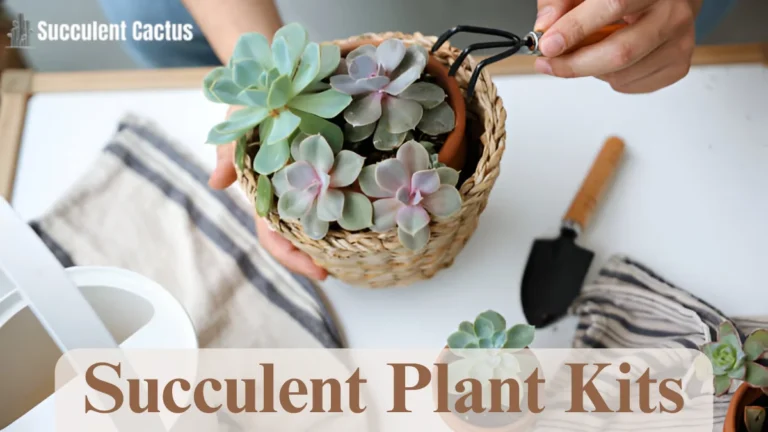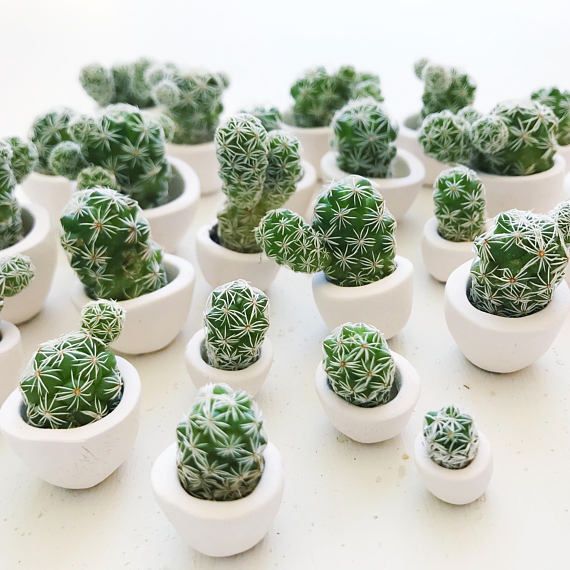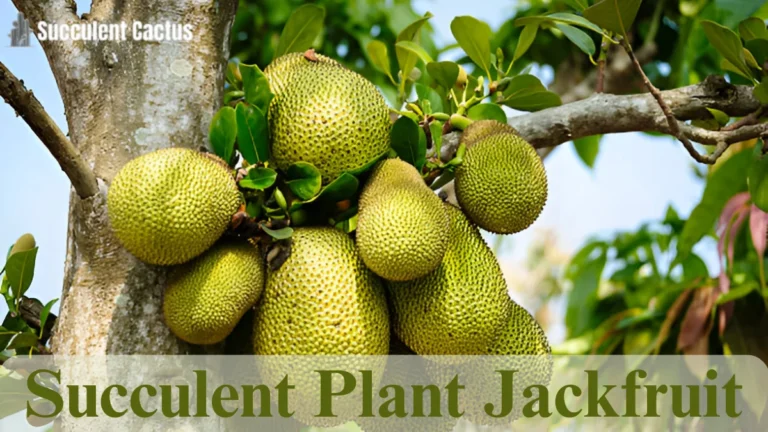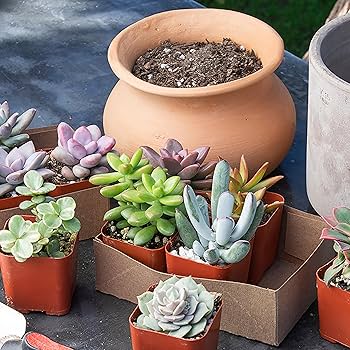Why Your Succulent Plant Keeps Dying: A Comprehensive Guide
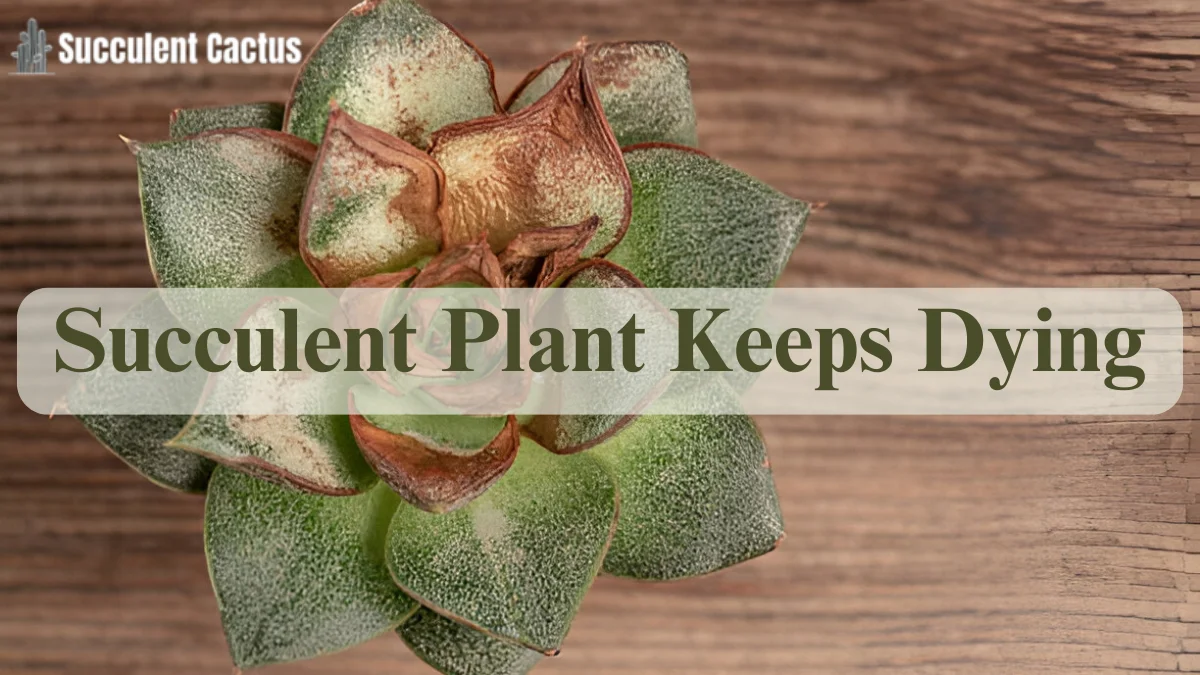
Succulent plants have become a popular choice for many gardeners due to their beauty, low-maintenance care, and ability to thrive in a variety of climates. However, if you’ve been struggling with a dying succulent plant, it can be frustrating and disheartening. Understanding the underlying reasons for your plant’s decline and knowing how to fix the issues can help you restore your succulent to its full health. In this blog post, we’ll explore common reasons why your succulent plant keeps dying and provide actionable tips for rescuing it. We’ll also cover important aspects like watering, soil conditions, sunlight, pests, and other factors that affect succulent health.
1. Overwatering: The Silent Killer of Succulent Plants
Overwatering is one of the most common reasons a succulent plant keeps dying, as it leads to root rot and poor growth. While succulents are designed to store water in their leaves and stems, they can still suffer from root rot if the soil is too wet for too long.
Signs of Overwatering
Recognizing the signs of overwatering early can save your succulent. Symptoms include yellowing leaves, soft and mushy stems, and a foul smell coming from the soil. These are all indicators that your plant is drowning, which can eventually lead to its demise.
Why Overwatering Happens
In many cases, overwatering occurs because gardeners are under the misconception that succulents need to be watered frequently. Succulents prefer dry conditions. Their thick, fleshy leaves store enough water to keep them hydrated for a long time, making regular watering unnecessary.
How to Prevent Overwatering
The key to preventing overwatering is to ensure your succulent soil has excellent drainage. Use a well-draining mix designed specifically for cacti and succulents, and make sure your container has drainage holes to allow excess water to escape. Always allow the soil to dry out completely between waterings to avoid soggy conditions.
2. Insufficient Light: The Cause of Stunted Growth
Succulents are sun-loving plants, and without enough light, they may start to wilt, become leggy, or lose their vibrant colors. Light is essential for succulents to thrive, as it helps them photosynthesize and produce the energy they need to grow.
Understanding Light Requirements
Succulents generally need at least six hours of direct sunlight per day. If you are growing succulents indoors, place them near a bright window or invest in grow lights to ensure they get enough light. Keep in mind that different types of succulents have varying light needs, so it’s important to research your specific plant’s preferences.
Signs of Insufficient Light
When a succulent doesn’t get enough light, it may become “etiolated,” meaning it stretches and grows taller with longer spaces between leaves. Its color may also fade and become pale.In extreme cases, a succulent plant keeps dying due to lack of energy.
Fixing Light Issues
To solve lighting problems, try moving your succulent to a brighter location, such as a south-facing window. If you’re unable to provide enough natural light, consider supplementing with artificial grow lights, which are specifically designed to mimic sunlight.
3. Wrong Soil: Poor Drainage Leads to Root Rot
Succulent plants need well-draining soil that allows excess water to escape quickly. If the soil holds onto too much moisture, it can cause root rot, leading to the eventual death of the plant.
Ideal Soil for Succulents
The best soil for succulents is a cactus or succulent-specific mix, which typically contains sand, perlite, and other materials that help with drainage. Avoid using regular potting soil, which tends to hold moisture for too long and can suffocate the roots.
Symptoms of Poor Soil Drainage
If your succulent is showing signs of wilting, yellowing leaves, or mushy stems, it’s likely suffering from root rot caused by poor drainage. Additionally, the roots may begin to rot if they are sitting in wet, compacted soil for too long.
How to Improve Soil Drainage
To improve soil drainage, consider repotting your succulent with a soil mix that has proper aeration. If you’re using containers, make sure they have drainage holes, as stagnant water in the bottom of the pot can quickly lead to problems.
4. Overfertilizing: Too Much of a Good Thing
While fertilizing can provide essential nutrients to your succulent, overfertilizing can damage your plant and stunt its growth. It’s important to understand the correct fertilization routine to prevent situations where your succulent plant keeps dying.
Effects of Overfertilizing
Excessive fertilizer can cause the soil to become too salty, which can burn the succulent’s roots and leaves. This often leads to browning and wilting, which are common signs when a succulent plant keeps dying due to improper care.
How to Fertilize Succulents Correctly
Succulents generally don’t need much fertilizer. A light feeding once a month during the growing season (spring and summer) with a diluted, balanced fertilizer is usually sufficient. Avoid fertilizing in the winter when succulents are in their dormant phase.
Organic vs. Synthetic Fertilizers
While organic fertilizers are gentler on succulents, synthetic fertilizers can provide a quick boost of nutrients. However, they should be diluted and used sparingly to prevent over-fertilization. Choose a low-nitrogen fertilizer, as too much nitrogen can harm your succulent, contributing to why a succulent plant keeps dying.
5. Underwatering: The Opposite Extreme
While overwatering is the most common issue, some succulent owners make the mistake of underwatering their plants. Succulents may appear tough, but they still need regular water to survive and thrive.
Signs of Underwatering
If you haven’t watered your succulent in a while, it may show signs of underwatering, such as shriveled, dry, or browning leaves. In severe cases, the succulent plant keeps dying due to dehydration.
How Often to Water Succulents
The frequency of watering depends on the climate and the specific type of succulent. However, most succulents need to be watered thoroughly but infrequently. Allow the soil to dry out completely between waterings, and adjust the watering schedule based on the season and environmental conditions.
How to Rescue an Underwatered Succulent
If your succulent is underwatered, give it a deep watering and allow the water to drain out of the bottom of the pot. Be patient—once the plant has received enough water, it should start to perk up. You may need to trim away any dried or dead leaves to allow for new growth.
6. Pest Infestation: Unseen Enemies
Pests can also be a common cause when a succulent plant keeps dying. While succulents are fairly resistant to most pests, certain insects, such as aphids, mealybugs, and spider mites, can infest your plant and cause damage.
Signs of Pest Infestation
Look for sticky residue, small webbing, or visible pests on your plant. Mealybugs appear as white, cotton-like masses, while aphids are small and usually cluster on the leaves or stems of the plant.
How to Deal with Pests
If your succulent has pests, start by removing them manually using a soft brush or cloth. You can also use insecticidal soap or a diluted alcohol solution to treat the plant. Make sure to isolate the affected plant to prevent the pests from spreading.
Preventing Future Infestations
To prevent pest problems, regularly inspect your succulents for signs of insects. Ensure that your plants are healthy and not stressed, as weakened plants are more susceptible to pests. Additionally, avoid overcrowding your plants, as this can provide a favorable environment for pests.
7. Temperature Stress: Too Hot or Too Cold
Succulents thrive in warm temperatures, but extreme temperature fluctuations can cause stress. If your succulent is exposed to conditions outside its preferred range, it can weaken and die.
Ideal Temperature Range
Most succulents prefer temperatures between 60-85°F (15-30°C). While some types of succulents can tolerate slightly cooler or warmer conditions, it’s important to avoid extreme temperatures, which can cause your plant to go into shock.
Signs of Temperature Stress
When succulents are exposed to temperatures that are too high or too low, they may develop discolored leaves, shriveled or soft spots, or even stop growing altogether. In extreme cases, they may collapse.
How to Protect Succulents from Temperature Extremes
To protect your succulents from temperature extremes, avoid placing them near air conditioners, heaters, or drafty windows. If you live in a cooler climate, consider bringing your succulents indoors during the winter months to prevent frost damage.
8. Soil Compaction: Restricting Root Growth
Soil compaction occurs when the particles in the soil become tightly packed, limiting airflow and water drainage. This can lead to poor root development, reduced nutrient uptake, and a weakened plant.
How to Identify Soil Compaction
If your succulent isn’t growing as expected or the leaves are turning yellow, soil compaction may be the issue. Check the drainage holes at the bottom of the pot. If water is slow to drain, the soil may be compacted.
Preventing Soil Compaction
To avoid soil compaction, use a well-draining mix specifically designed for succulents. Additionally, make sure the pot has proper drainage holes to prevent water from accumulating at the bottom of the container.
Fixing Compacted Soil
If your succulent’s soil has become compacted, repot it into fresh, well-draining soil. Gently shake the plant to remove the old soil, being careful not to damage the roots. This will allow the roots to breathe and grow more effectively.
9. Environmental Stress: How Factors Like Humidity and Airflow Affect Succulent Health
Succulents are adapted to dry, arid environments, but the wrong balance of humidity and airflow can lead to environmental stress, affecting their overall health.
Humidity and Succulents
Succulents thrive in low-humidity conditions. High humidity can cause fungal diseases and encourage rot. If the air around the plant is too humid, the excess moisture can sit on the leaves, leading to mold or mildew growth.
Ideal Humidity Range for Succulents:
| Plant Type | Ideal Humidity | Impact of High Humidity |
| Aloe Vera | 40% – 50% | Susceptible to mold and fungal growth |
| Echeveria | 40% – 50% | Prone to rot if moisture lingers on leaves |
| Jade Plant | 30% – 50% | Leaves may rot or develop spots in high humidity |
Airflow Considerations
Proper airflow is equally important for succulents. Stagnant air can trap moisture around the plant, creating the perfect breeding ground for pests and diseases. Air circulation also helps in reducing moisture on the leaves, which is essential to prevent over-watering or fungal infections.
How to Ensure Proper Airflow:
- Place your succulents in well-ventilated areas.
- Avoid overcrowding plants in a confined space.
- Consider using fans or keeping windows open in rooms with high humidity.
Ways to Combat Environmental Stress
If you live in a humid area, using a dehumidifier or placing your plants in areas with good airflow, such as near windows or in air-conditioned spaces, can help reduce excess moisture. Additionally, ensure your succulents are in containers with good drainage to prevent water from accumulating in the soil.
10. Improper Pot Size: How Choosing the Right Pot Can Prevent Succulent Death
The size of your pot plays a critical role in the health of your succulent plant. If your pot is too large or too small, it can lead to water retention problems, root rot, and other issues.
Choosing the Right Pot Size
A common mistake when planting succulents is choosing a pot that is too large. While it may seem like a bigger pot gives the roots more room to grow, it can cause the soil to retain too much moisture. When the soil is too wet for too long, the roots can rot. A pot that is only slightly larger than the plant’s root system is ideal.
Pot Size Guidelines:
| Pot Size | Recommended Plant Size | Effect on Watering |
| 4-5 inches | Small succulents (e.g., Aloe Vera, Echeveria) | Allows quick drainage; reduces water retention |
| 6-8 inches | Medium-sized succulents (e.g., Jade Plant) | Provides enough room for roots without excess moisture |
| 10 inches + | Larger succulents (e.g., Agave, Aloe) | Best for plants with extensive root systems |
What Happens if the Pot is Too Large?
A pot that’s too large will cause the soil to retain water for longer than necessary. Since succulents do not need frequent watering, the excess moisture in the large pot can lead to root rot, especially if the plant isn’t watered properly.
How to Repot Your Succulent Correctly
Repotting your succulent can also help it thrive. When repotting, use a pot that’s 1-2 inches larger in diameter than the plant’s current pot. This ensures the roots have room to grow while still encouraging proper drainage.
11. The Role of Fertilization: How Too Much or Too Little Can Harm Your Succulent
Fertilizing your succulent may seem like an easy way to boost growth, but improper fertilization can lead to several problems, including nutrient deficiencies and excess salt in the soil.
Signs of Over-fertilizing
Over-fertilizing can cause nutrient burn, which appears as brown or yellow tips on the leaves. In severe cases, excessive fertilizer can lead to the plant’s demise, as the roots may become damaged by the buildup of salts and minerals in the soil.
Symptoms of Over-fertilization:
| Symptoms of Over-fertilization | Possible Cause |
| Brown or yellow leaf tips | Too much nitrogen or phosphorus |
| Stunted growth | Soil salinity causes the nutrient block |
| Leaf drop | Root damage from fertilizer burn |
Signs of Under-fertilizing
On the other hand, under-fertilizing can result in poor growth and a lack of vibrant color. Succulents require fewer nutrients than other plants, but they still need a minimal amount to thrive.
Symptoms of Under-fertilization:
| Symptoms of Under-fertilization | Possible Cause |
| Yellowing leaves | Nitrogen or iron deficiency |
| Weak, leggy growth | Lack of essential minerals |
| Slow growth | Insufficient nutrients for photosynthesis |
Fertilization Tips for Succulents
To avoid fertilization issues, use a balanced, diluted fertilizer (such as a 10-10-10 or 15-15-15 blend) during the growing season. Fertilize only once every 4-6 weeks, and never fertilize during the dormant winter months.
12. Seasonal Changes and Their Effect on Succulent Health
Succulents are adapted to seasonal changes, but as with all plants, extreme seasonal variations can put stress on them.
Succulent Growth in Spring and Summer
In the warmer months, succulents are actively growing, and they need more water and light to fuel their growth. During this period, they may need to be watered more frequently as their roots take up more moisture to support the new growth.
Spring and Summer Care Tips:
| Task | Spring/Summer Care |
| Watering Frequency | Increase watering frequency as plants actively grow |
| Light Requirements | Ensure plants receive 6+ hours of direct sunlight |
| Fertilization | Feed plants with a diluted, balanced fertilizer every 4-6 weeks |
Succulent Growth in Fall and Winter
In the cooler months, succulents go dormant. During this period, their water needs are reduced, and they require less light. Watering too frequently during this period can cause the plants to rot.
Fall and Winter Care Tips:
| Task | Fall/Winter Care |
| Watering Frequency | Reduce watering frequency, allowing the soil to dry completely |
| Light Requirements | Ensure sufficient indirect sunlight or use grow lights |
| Fertilization | Avoid fertilizing to respect the plant’s dormant state |
How to Adapt Your Care Routine for Seasonal Changes
As temperatures fluctuate throughout the year, it’s crucial to adjust your care routine accordingly. In colder months, consider moving your succulents indoors if they are typically kept outside to protect them from frost damage.
FAQs: Addressing Common Questions about Succulent Plant Care
Q:1 Why does my succulent have soft, mushy leaves? Ans: Soft, mushy leaves usually indicate overwatering or root rot. Check the roots and make sure the plant isn’t sitting in waterlogged soil.
Q:2 How can I tell if my succulent is getting too much sunlight? Ans: If your succulent has burnt, sun-scorched leaves with brown or yellow spots, it’s likely getting too much direct sunlight.
Q:3 Can I save a succulent with root rot? Ans: Yes, but it depends on the severity of the rot. Trim off the rotting parts, let the healthy roots dry, and repot the plant in fresh, well-draining soil.
Q:4 How often should I water my succulents? Ans: Water your succulents when the soil is completely dry. During the growing season (spring and summer), this may be once every week or two. In the winter, watering may only be needed every three weeks or more.
Q:5 Why is my succulent turning yellow? Ans: Yellowing can indicate overwatering, too much direct sunlight, or nutrient deficiencies. Assess the plant’s care routine to pinpoint the cause.
Conclusion
Succulent plants can be incredibly resilient and beautiful, but they do require specific care to thrive. By understanding the common causes of succulent plant death—such as overwatering, insufficient light, and poor soil conditions—you can take the necessary steps to restore your plant to health. Regular attention to watering habits, sunlight, and pest control will help ensure that your succulent thrives for years to come.

